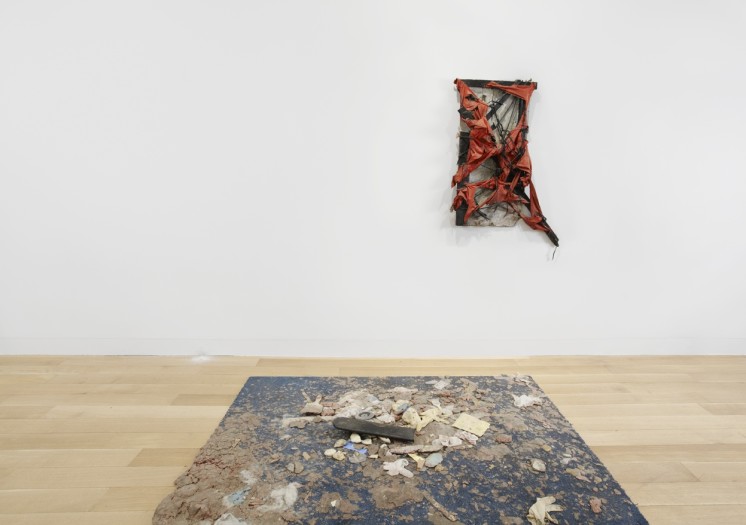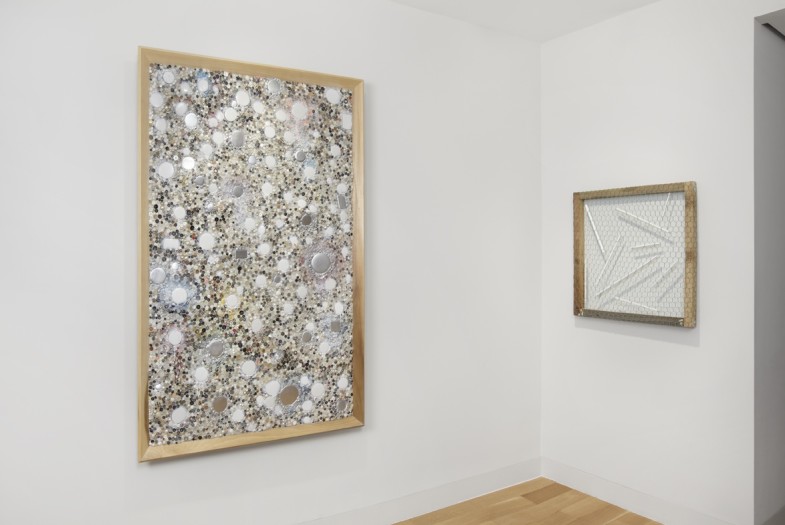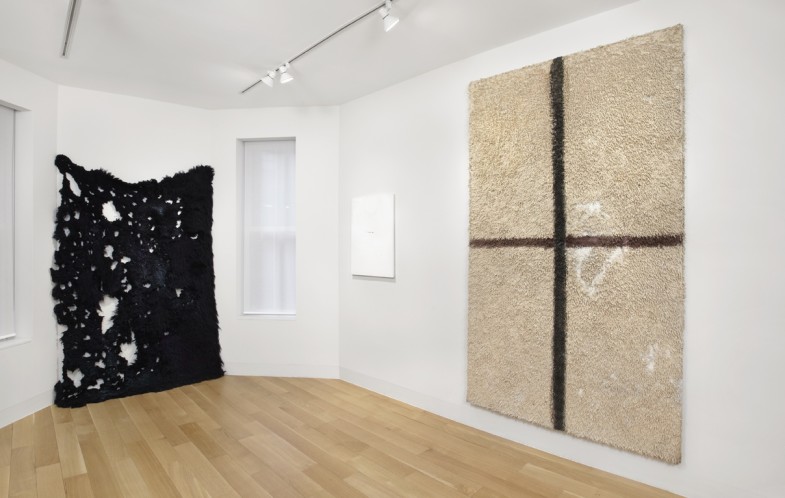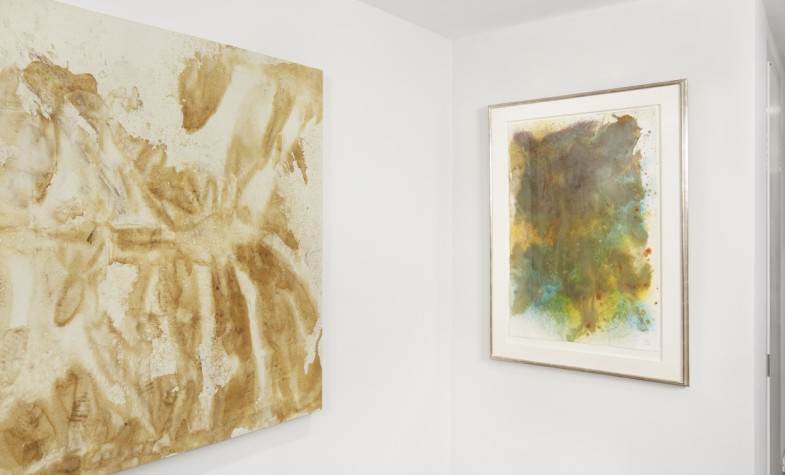Luxembourg & Dayan gallery will unveil the exhibition Unpainted Paintings, an international survey of more than two dozen extraordinary works of abstract art from the 1950s to the present that together reveal a continuous, if often underappreciated, strain of Modernism. For decades, artists have oscillated between loyalty to pictorial tradition and a desire to expand the boundaries of, undermine, or even attack the picture plane. Pushing the expressive potential of the non-conventional with such actions as burning, tearing, stitching, smothering, and soiling, the artists represented in this historical show range from Lynda Benglis, Pier Paolo Calzolari, Jean Dubuffet, Raymond Hains, Sheila Hicks, Piero Manzoni, Otto Muehl, Blinky Palermo, Paola Pivi, Robert Rauschenberg. Each is a pioneer of spilling forms, aggressive gestures, sewn alternatives, and impermanent materials.
Organized by Alison Gingeras, chief curator at Palazzo Grassi, Unpainted Paintings will include works loaned from artists’ estates, significant private collections and, in the case of younger artists, studios directly. A number of these objects have never before been shown in the United States; some have never before been exhibited publicly. Unpainted Paintings will remain on view through May 27, 2011, and will be the subject of an expansive illustrated catalogue to be released in summer 2011. Robert Rauschenberg, Untitled (Gold Painting ), 1955, Gold leaf on fabric, newspaper and glue on canvas, in wood and glass frame, 13.75 x 13.25 x 1.75 inches, Art Copyright: Estate of Robert Rauschenberg / Licensed by VAGA, New York, NY
In the aftermath of World War II, a number of artists from different cities, responding to different and profoundly altered social, political, and intellectual contexts, shunned conventional parameters in search of a new definition of what constitutes “painting.” In their efforts, many deployed new types of materiality and embraced process-oriented methods to construct their art. They asserted aggressively iconoclastic, experimental, and irreverent approaches towards two-dimensional supports; abandoning paint and sometimes canvas and board as well, they resorted to fiber, garbage, precious metals, plastic, dirt, and visceral substances of every type, rendering results redolent of both a sense of the post-war world’s fragility and their desire to radically redefine that world. “In our painting we recognize materials as the real object of our works,” Otto Muehl declared in the early 1960s. “It is a question of presenting material, matter itself. For us, manufactured paint exists no more, we reject it as something aesthetic and degenerate. Our guiding principle is: matter = paint.” The motivations behind the experimental practices of the artists included in Unpainted Paintings are as varied as the works themselves. Some of these artists emerged by way of a transgressive aesthetic and a desire to destroy easel painting because of its bourgeois connotations, while others have explored performative and formal avenues in a less politicized and more playful manner. When considered together, the earlier artists in the exhibition forged a legacy of daring and rebellion for subsequent generations by virtue of the ways in which they pushed the limits of the established definitions, material conditions, and conceptual frameworks for painting. The accomplishments of such artists as Alberto Burri, Lucio Fontana, and Gunther Uecker, for example, with their violent implications, are commonly interpreted as a response to the socio-political traumas of the war. But their investigations were as much, if not more, about evolving aesthetics. “Many people have thought that I was trying to destroy; but that is untrue,” wrote Fontana. “I have constructed, not destroyed, that is the key issue.” This type of subversive ‘unpainted painting’ practice does not end in the 1960s. From the 1970s through today, artists have continued to push the formal, conceptual, and material boundaries of the picture plane. Unpainted Paintings brings together important and rare objects by such later artists as Martin Kippenberger and Rosemarie Trockel, who have created their work in a very conscious nod to the socio-political codes surrounding their art historical antecedents. Other contemporary artists in the exhibition – among them, Dan Colen, Alex Hubbard, Mike Kelley, and Steven Parrino – have recuperated and expanded upon these aesthetic strategies in a more liberated matter. Among the objects in the exhibition are indeed some in which paint has been used; in those cases, its presence either is downplayed as a minor element or presented in a deliberately subversive way.
By bringing together such a broad array of individuals and works, Unpainted Paintings will attempt to re-trace a compelling and provocative impulse across generations, nationalities, and artistic movements. No matter how unconventional their materials, and in spite of the relative lack of actual paint involved, each of these artists has been passionately committed to exploring “painting” in principle and has renewed the form’s potential through experimentation and irreverence.













